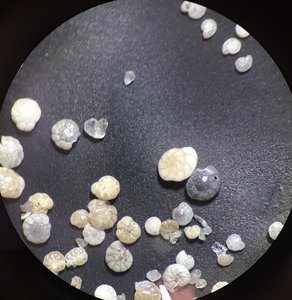During my GSGS Fellowship Grant (October 2019), I was able to complete the laboratory work on the drilling cores that are planned for the application of the transfer function (TF) for relative sea level, published in September 2019 (Scheder et al., 2019). This TF, however, still has to be improved by additional samples. Therefore, I started to investigate foraminifer samples analysed by Dr. Kristin Thomsen (Senckenberg am Meer, Germany) in order to include them to the preliminary TF, which is currently still in progress.
Furthermore, during the funding period, I started collecting foraminifers from selected samples of three of the investigated sediment cores. These enriched foraminifer samples are supposed to be 14C-dated in order to improve the already existing, mainly peat-based, chronostratigraphy. A first part of the samples has, by now, been sent to the Poznan Radiocarbon Laboratory (Poland), whereas the second part will be sent to the Beta Analytic Testing Laboratory (USA) in the near future.
I would like to thank the GSGS and the steering committee for the generous funding, which paved the way for my PhD work to start its final phase. Furthermore, I owe thanks to Prof. Dr. Helmut Brückner, Dr. Anna Pint, Dr. Peter Frenzel, Dr. Max Engel and Dr. Friederike Bungenstock, who support and supervise me in each possible way with my research.
Juliane Scheder
PhD student
Prof. Dr. Helmut Brückner (working group)
PhD project: “The Wadden Sea as an archive for landscape evolution, climate change and settlement history: Exploration – analysis – predictive modelling” (short: WASA)
